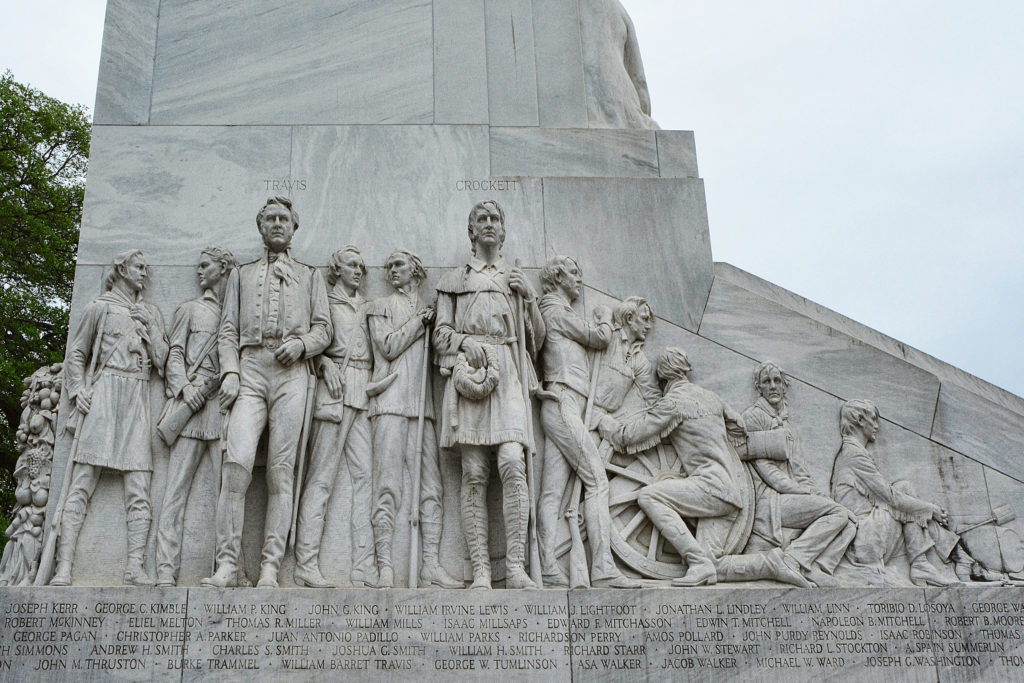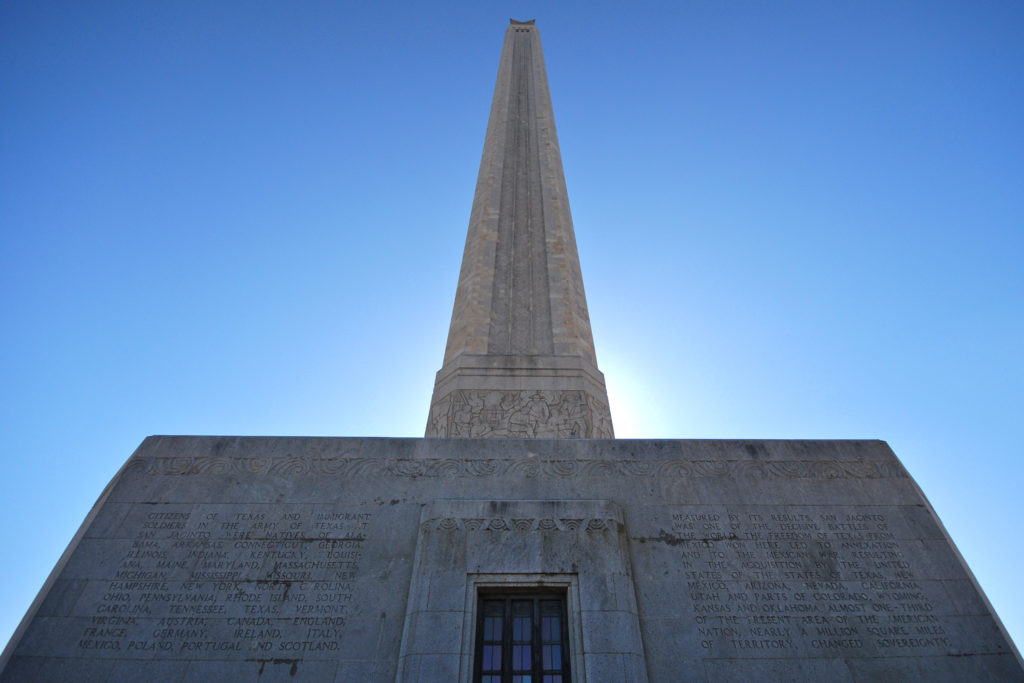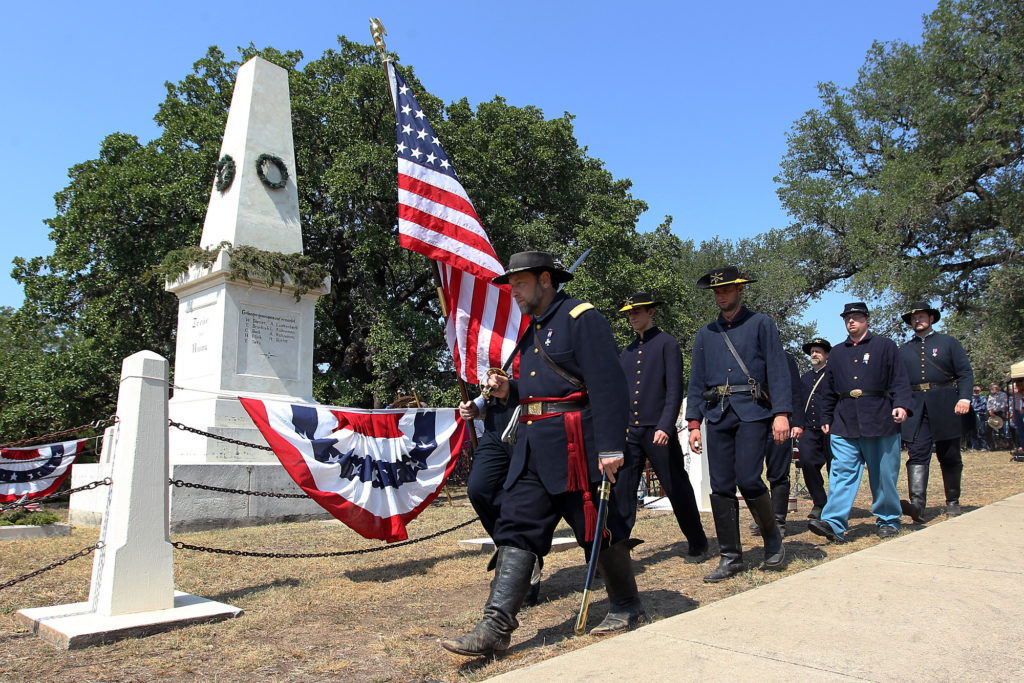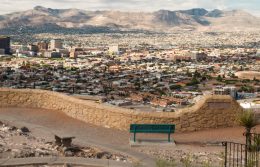Famous Texas War Memorials
The flags of six nations have flown over Texas. So it’s understandable that during the state’s relatively brief history, it’s seen its fair share of conflict — from the Texas Revolution to the Mexican-American War and the Civil War to wars with Native American tribes. Many more Texans have made the ultimate sacrifice serving overseas.
Throughout the state, Texans have erected memorials to commemorate these efforts and ensure that we never forget what those who came before us gave. Here are some of the more prominent war memorials worth visiting around Texas.
The Capitol Monuments
The grounds of the state capitol in Austin are home to 22 monuments commemorating the Texans who fought in many conflicts, both at home and around the world. Some of the most prominent include the African American History monument, the Heroes of the Alamo monument, the Texas Cowboy Monument, and monuments to veterans of the Spanish-American War, World War I, World War II, the Korean War, and the Vietnam War.
The Price of Liberty statue, also known as the Texas War Memorial, is one of the newest and perhaps the most stunning of the capitol monuments. Erected in 2018, the bronze statue depicts a young soldier departing from his family on an overseas deployment and commemorates the sacrifice families make in sending their loved ones into conflict.
Come and Take It Monument
It is one of the most iconic moments of the Texas Revolution. During the Battle of Gonzales — which began the conflict — a small garrison of Texas soldiers stood their ground against the better-trained Mexican army, who were under orders to seize Texas’ small, bronze cannon. The garrison successfully defended their ground, and the cannon became a symbol of the resistance, emblazoned on a flag with the phrase “Come and Take It” to rally morale. Today, a small concrete marker stands on the field in Gonzales where, on Oct. 2, 1835, the troops held off the Mexican army.

Alamo Cenotaph
Although the historic Alamo building could be considered the oldest and most revered monument in Texas, in 1940 the city of San Antonio erected the large Alamo Cenotaph to commemorate the pivotal moment in the Texas Revolution. The 60-foot grey-marble and pink-granite structure lists the names and depicts relief images of the 187 known defenders of the Alamo. On the face of the monument, an inscription pays tribute to their bravery:
“They chose never to surrender nor retreat; these brave hearts, with flag still proudly waving, perished in the flames of immortality that their high sacrifice might lead to the founding of this Texas.”

San Jacinto Monument
It’s appropriate that in a state as big as Texas, the monument celebrating the Lone Star State’s independence is truly massive. Dedicated in 1939, the 567-foot obelisk bears a 220-ton star, making it the world’s tallest masonry column. Visitors to the San Jacinto Museum of History can take an elevator to the monument’s observation deck, which looks out on the Houston shipping canal that now runs by the San Jacinto Battlefield. An inscription on the monument recounts the history of the Texas Revolution, culminating in a battle in which general Sam Houston led the Texans to victory against the Mexican army to cries of “Remember the Alamo!”

Treue der Union Monument
In 1862, Kinney County, like much of the Texas Hill Country, was placed under martial law by the Confederate Army. That’s because many of the approximately 20,000 German settlers who had recently arrived in the Hill Country opposed the Confederacy’s support of the institution of slavery. When 61 German settlers attempted to flee Texas for Mexico, they were confronted by Confederate soldiers and attacked. By some accounts, 30 German Texans were killed and 20 were wounded.
In 1866, the Treue der Union Monument was raised in Comfort to commemorate the victims of the massacre. It was one of the very first monuments raised after the Civil War, and it stands near the site of the mass grave where many of the victims are buried. The names of the victims are etched into the modest limestone plinth.
World War I Monument
Texans fought bravely in every armed conflict the U.S. has fought in since the Mexican-American War. In Sam Houston Park, a modest granite block remembers the local Houstonians who fought for their country during World War I. A bronze plaque adorned with an eagle lists their names. Curiously, the date of its dedication and the artist who designed the monument are unknown.
Big Spring Vietnam Memorial
An understated and reverent monument, the Big Spring Vietnam Memorial honors the men and women who gave their lives or were taken as prisoners of war during the conflict in Vietnam. A 9-foot black granite memorial features a map of the Southeast-Asian country with the POW-MIA logo etched into its face. Flanked by flags representing each branch of the armed forces, the memorial sits in a 2-acre park that also houses some of the military vehicles used in the conflict.
For more Texas history, follow our guide to the historic Texas Forts Trail.
© 2019 Texas Farm Bureau Insurance



